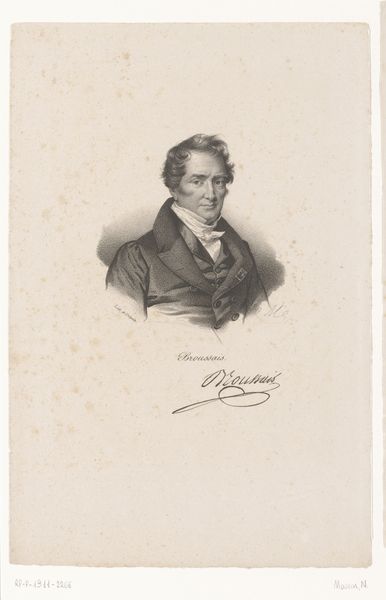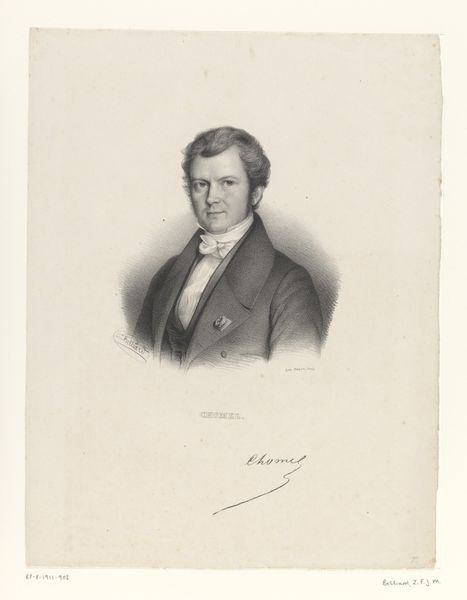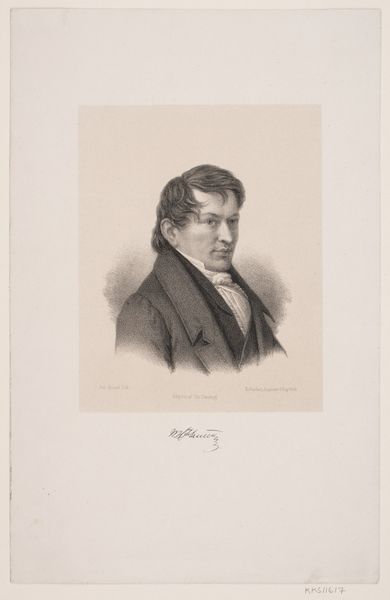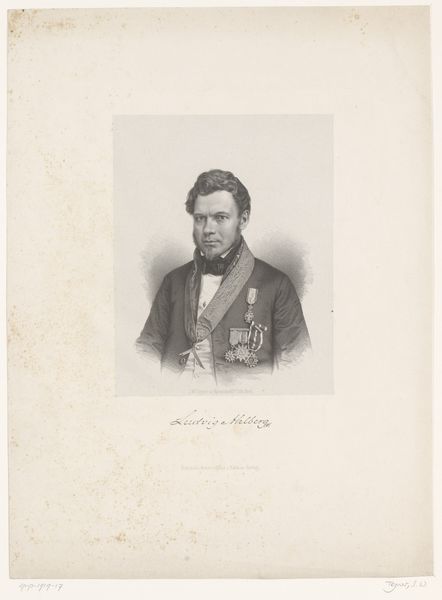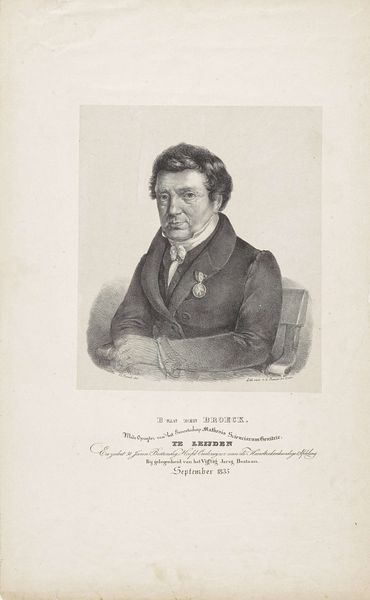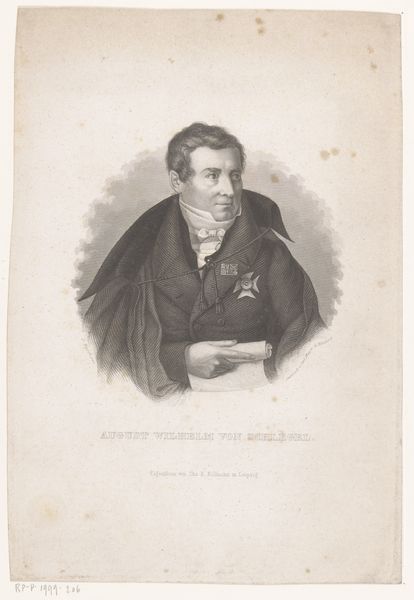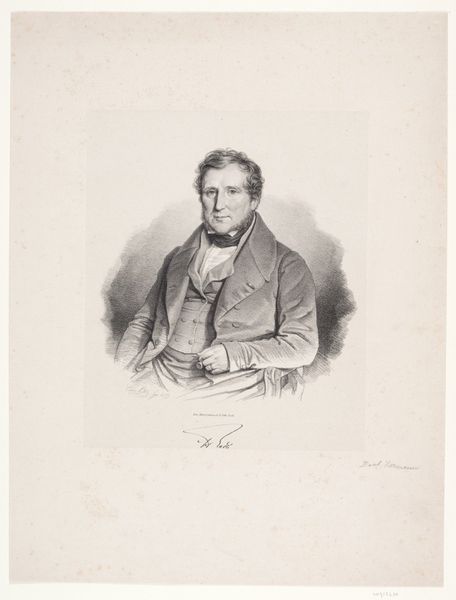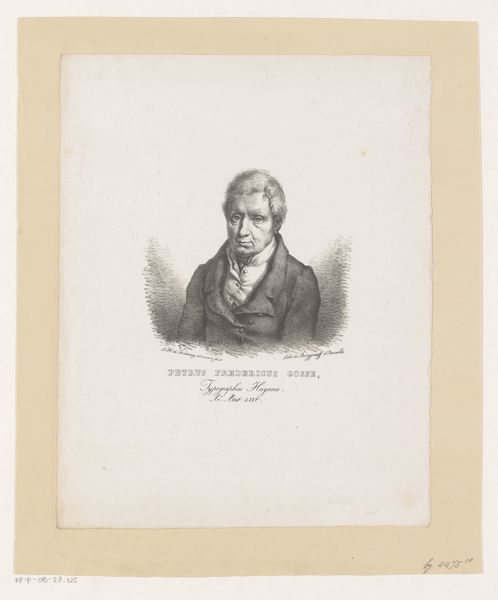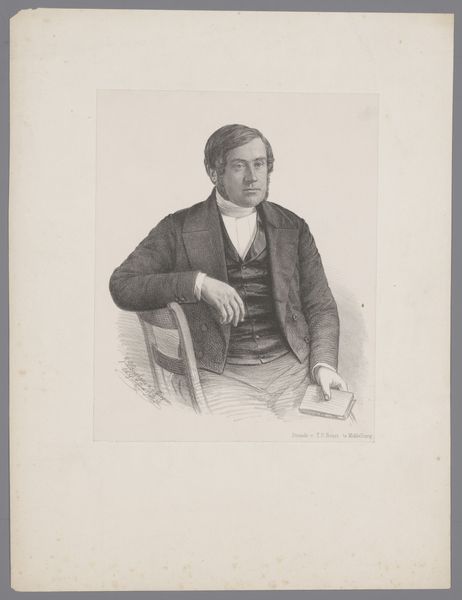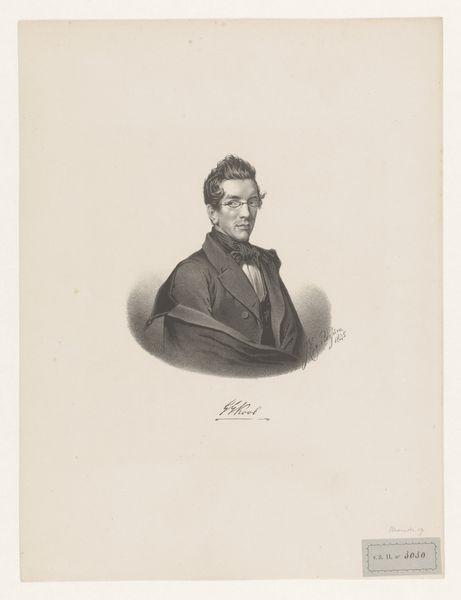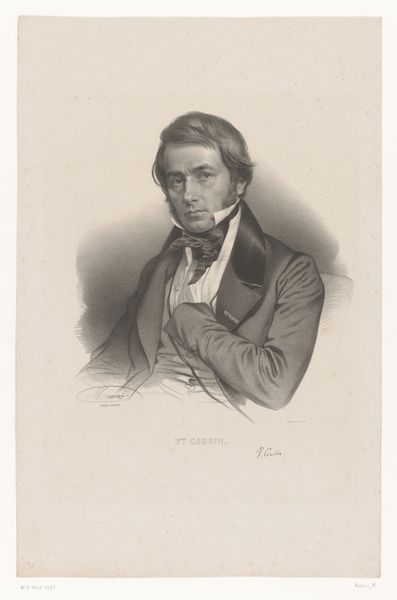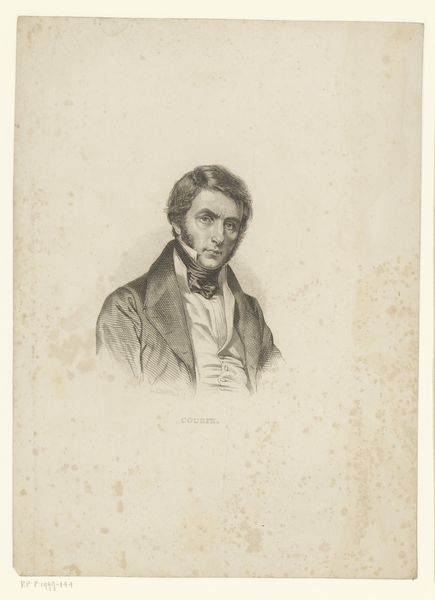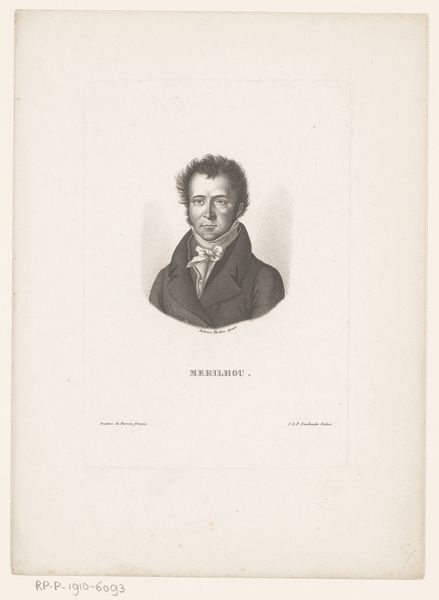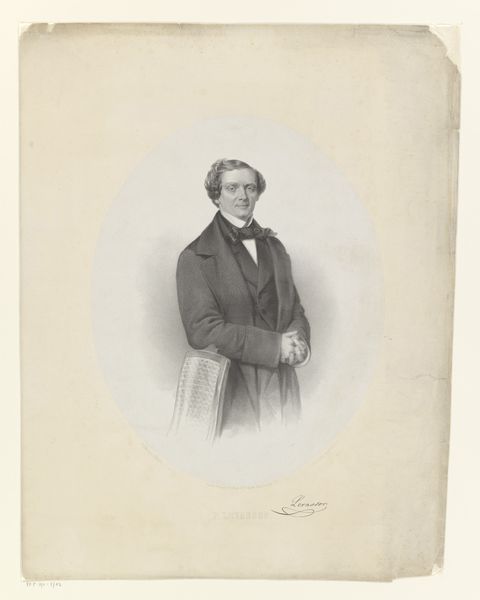
drawing, paper, graphite
#
portrait
#
drawing
#
neoclassicism
#
paper
#
graphite
Dimensions: height 444 mm, width 358 mm
Copyright: Rijks Museum: Open Domain
This is a portrait of Andreas Schelfhout, made by Eugène Verboeckhoven, using lithography. Lithography is a printing process that relies on the chemical repulsion of oil and water. The image is drawn on a flat stone or metal plate with a greasy substance. Water is then applied, which adheres only to the non-greasy surfaces. Next, oily ink is rolled over the surface, sticking only to the greasy areas. Finally, paper is pressed against the plate, transferring the inked image. Looking closely, you can see how the lithographic process lends itself to the soft tonal gradations that define Schelfhout's features and clothing. The fine lines and subtle shading are products of the artist’s hand and skill. The success of lithography in the 19th century was tied to wider social issues of labor and politics, as it made images more widely and cheaply available, but it depended on the skilled labor of the artists and printers who made them. Paying attention to the materials, the making process, and its context helps us understand the full meaning of this artwork.
Comments
No comments
Be the first to comment and join the conversation on the ultimate creative platform.
